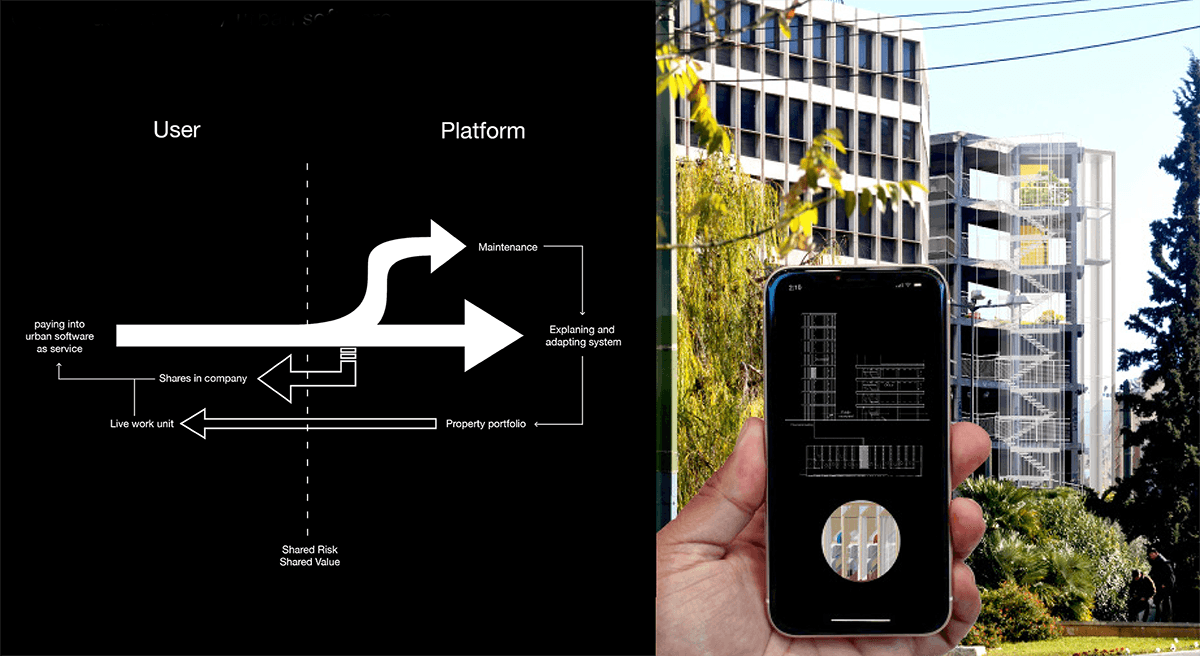An instance embedded within Athens exemplifies the adaptation of existing urban and financial frameworks to challenge prevailing notions of ownership within globally interconnected cities.
Aviators Place stands within a context of several notable examples. Positioned amidst the Acropolis, which underwent radical reprogramming, envisioning the city as an improvised ruin, and the Polykatoikia—a speculative building system controlled by centralised Greek manufacturing companies—this site embodies twentieth century urban ideals– appropriating the image and build of architecture as a financial instrument.
This project aims to engage in the creation of embedded smart contract enabled domestic units, exploring the possibilities inherent in vacant spaces and web 3 technologies and subsequently moving Athens away from a platform based urban and software model.
By challenging prevailing economic models and proposing alternative ownership protocols, IRL's design redefined the dominance of housing stock within Athens' historic core, enforced by Airbnb's presence.
The ground floor, designed to integrate with the street and embrace emergent flora and fauna, embodies an architectural approach that intertwines a technical steel facade, providing both shade and circulation. This architectural interplay harmonises with three distinct domestic spaces: the dormitory, room, and common room.
Aviators Place was designed by IRL as a catalyst for a broader movement within Athens and other global cities struggling to find alternative models for ownership. The exploration of alternative ownership models and spatial optimisation have since become a focal point in the web3 community. This paradigm shift has since led to a deeper examination of decentralised governance, democratized ownership, and the reconfiguration of digital assets towards the physical.
Location: Athens, Greece
Type: Research
Year: 2023
Lead: Karl Herdersch
Thanks: Aristide Antonas






